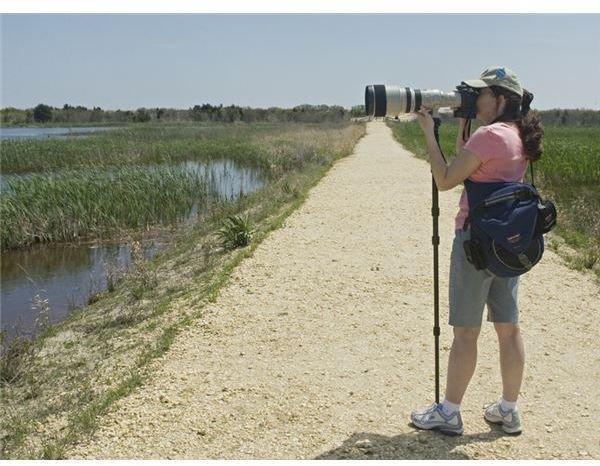Monopods Can Help Your Photography when Used Properly
Introduction
Monopods are useful but often misused and misunderstood tools. While they can be used to improve camera stability, they’re not quite the same thing as a tripod “lite.” With proper technique, a monopod can give you an additional one to two f-stops worth of stability, but sadly, is often misused. The proper way relies on using your body to help brace the monopod and keep it as steady as possible.
Proper Technique
Here’s how the technique works:
- Extend the monopod to the desired height.
- Brace the monopod against your chest.
- Bring left foot (for right handed shooters) around the front of the monopod and brace the foot of the monopod against your foot.
- Press your head against the camera viewfinder (for when using the viewfinder for shooting rather than the LCD finder).
- Bring your left hand under the lens (for DSLRs) and brace your left elbow against your body.
- Brace your left leg against the monopod so your body is bracing from the rear and your leg from the front.
- Squeeze the shutter gently.
Monopods are most effective when used in vertical orientation rather than tilted since they brace better pressed directly into the ground rather than dealing with the possibility of the base slipping on the ground. It’s easier to use a monopod with a lens that has its own tripod collar, but a small ball head can give you a way to orient the camera vertically if it’s mounted to the monopod via the camera’s tripod socket.
The other reason monopods are useful is for taking the weight of heavy camera/lens combinations. This is why you see them so often in use for sports photography where the photographer is dealing with a heavy lens.
Monopods come in several different materials with aluminum and carbon fiber being the most common. A decent aluminum monopod can cost about $50 while a good carbon fiber one might cost three times as much. When choosing a monopod, be careful to pick one that’s sturdy enough for your camera.
